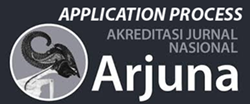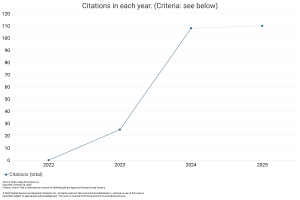Assessment of meteorological drought using Standard Precipitation Index model (SPI) in Herat, Afghanistan
DOI:
https://doi.org/10.59653/ijmars.v2i01.380Keywords:
Meteorological Drought, Standardized Precipitation Index, Drought Management, Herat province, Pul-I-HashemiAbstract
Assessing drought is a crucial component of effective drought risk management, stemming from diminished precipitation relative to the historical average, which subsequently impacts soil moisture and water reservoirs. The standard precipitation index (SPI) is commonly used to capture temporal and spatial variations. This research aims to evaluate the intensity, frequency, and duration of meteorological drought using SPI with time scales of 1, 3, 6, and 12 months in Herat Province, Afghanistan. The study encompasses 6 gauging stations with a 43-year record period in the region. The results show that with an increase in the time scale, the duration and frequency of drought increase. Additionally, the study reveals that the common extreme drought year for all stations was the year 2001, but the most extreme occurred in the year 2009 with an intensity two times greater than that of the year 2001. Due to the discrepancy of drought occurrence in each station, the findings suggest that for better drought management in the country, it is essential to analyze droughts in each local location. Over the past 43 years, the Cheldkhtaran station experienced the highest proportion of time in drought, accounting for 28.5%. Similarly, the Khosh Rabat station experienced droughts for 26.4%, the Nazdik-i-Herat station for 27.7%, the Pul-i-Hashemi station for 23.6%, and the Rabat-i-Akhund station for 26.9% of their respective time in the past 43 year.
Downloads
References
ABC News. (2012, March 10). 145 “presumed dead” in Afghan avalanche: http://www.abc.net.au/news/2012-03-10/death-toll-from-afghan-avalanches-rises-to-56/3881862
Ahmad, M., and Wasiq, M., 2004. Water resources development in Northern Afghanistan and its implications for Amu Darya Basin (No. 36). World Bank Publications.
Alami, M. M. and TAYFUR.(2022). Meteorological Drought Analysis for Helmand River Basin, Afghanistan. Teknik Dergi Technical Journal, (33)4, 12223 – 12242.
APN, 2015. An International Geosphere‐Biosphere Programme Synthesis Theme on Global Environment Change and Sustainable Development: Needs of Least Developed Countries. A project report by Asia-Pacific Network for Global Change Research, 16-17.
CNN.com - Afghanistan on verge of widespread famine - May 5, 2001. (2023, 29 July) from http://www.cnn.com/2001/WORLD/asiapcf/central/05/04/afghan.drought/
Crop Recovery in Afghanistan. (2009, June 12). Earthobservatory.nasa.gov. https://earthobservatory.nasa.gov/images/38920/crop-recovery-in-afghanistan
Edwards, D. C. and T. B. McKee, 1997: Characteristics of 20th century drought in the United States at multiple time scales. Climatology Report 97-2, Department of Atmospheric Science, Colorado State University, Fort Collins, Colorado.
Group, P. (n.d.). Standardized Precipitation Index User Guide | E-Library. Library.wmo.int. https://library.wmo.int/index.php?lvl=notice_display&id=13682
Guttman, N.B., 1998: Comparing the Palmer drought index and the Standardized Precipitation Index. Journal of the American Water Resources Association, 34(1):113–121.
Miyan, M. A., 2015. Droughts in Asian Least Developed Countries: Vulnerability and sustainability. Weather and Climate Extremes, 7. 8-23.
National Weather Service.(2023) Understand Drought and Know How to Respond: https://www.weather.gov/safety/drought#:~:text=Drought%20is%20a%20deficiency%20in,duration%20of%20droughts%20varies%20widely.
Nosrati, K., & Zareiee, A. R. (2011). Assessment of meteorological drought using SPI in West Azarbaijan Province, Iran. Journal of Applied Sciences and Environmental Management, 15(4), 563–569. https://doi.org/10.4314/jasem.v15i4
OCHA. (2019, April). Afghanistan: Forced to flee: https://www.unocha.org/story/afghanistan-forced-flee.
The Impact of the Drought in Afghanistan. (2021, April 30). The Borgen Project. https://borgenproject.org/the-drought-in-afghanistan/
UPI.com. (2023, July 29). Severe drought hits Afghanistan:http://www.upi.com/Top_News/World-News/2011/10/06/Severe-drought-hits-Afghanistan/UPI-18541317904385/
Usda.gov. (2023). Afghanistan Drought. https://ipad.fas.usda.gov/highlights/2008/08/Afghanistan%20Drought/#:~:text=AFGHANISTAN%3A%20Severe%20Drou
Wikipedia. (2023,15 October) rought in Afghanistan.https://en.wikipedia.org/wiki/Drought_in_Afghanistan.
World bank. document.Hunger before drought: food insecurity in Afghanistan. https://documents1.worldbank.org/curated/en/560691563979733541/pdf/Hunger-before-the-Drought-Food-Insecurity-in-Afghanistan.
Zhang, Y., Wang, P., Chen, Y., Yang, J., Wu, D., Ma, Y., Huo, Z., & Liu, S. (2023). The optimal time-scale of Standardized Precipitation Index for early identifying summer maize drought in the Huang-Huai-Hai region, China. Journal of Hydrology: Regional Studies, 46, 101350. https://doi.org/10.1016/j.ejrh.2023.101350
Downloads
Published
How to Cite
Issue
Section
Categories
License
Copyright (c) 2023 Arif Alkozay

This work is licensed under a Creative Commons Attribution-ShareAlike 4.0 International License.
Authors who publish with this journal agree to the following terms:
- Authors retain copyright and grant the journal right of first publication with the work simultaneously licensed under a Creative Commons Attribution-ShareAlike that allows others to share the work with an acknowledgement of the work's authorship and initial publication in this journal.
- Authors are able to enter into separate, additional contractual arrangements for the non-exclusive distribution of the journal's published version of the work (e.g., post it to an institutional repository or publish it in a book), with an acknowledgement of its initial publication in this journal.
- Authors are permitted and encouraged to post their work online (e.g., in institutional repositories or on their website) prior to and during the submission process, as it can lead to productive exchanges, as well as earlier and greater citation of published work (See The Effect of Open Access).
























